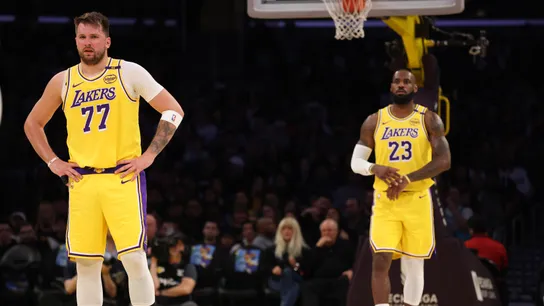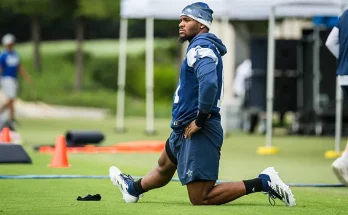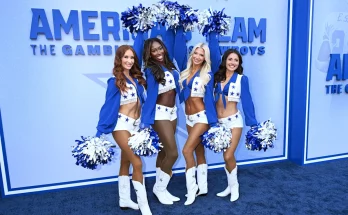Here’s a comprehensive look at the Lakers’ offseason ahead, from the aftermath of one blockbuster trade to the chase for championship depth. It’s about positioning for now while building for the future—around LeBron James, extending Luka Dončić, and solving long-standing size issues.
The summer began with seismic change: on February 2, 2025, the Lakers completed the historic mid-season three‑team swap that brought Luka Dončić to Los Angeles in exchange for Anthony Davis, Max Christie, and a 2029 first-round pick It was the first time two reigning All-NBA players were traded for each other mid-season, signaling a bold shift. Luka immediately gave the Lakers a transcendent playmaker, and the trade fundamentally reshaped the team’s narrative
That move, though, shifted the franchise’s axis. Post-trade, some doubted the balance of the roster—short on size, thin on depth. J.J. Redick notably emphasized their need for a true center after getting exposed late in the season by Rudy Gobert’s rim presence . Despite LeBron’s continued brilliance—proof that he’s still All-Star level—those weaknesses became glaring under playoff pressure
Ownership also changed dramatically. Mark Walter, of Dodgers fame, took control in a deal valuing the Lakers at around $10 billion, potentially unlocking a more aggressive financial and competitive posture With such a valuation comes vastly expanded potential for investment, even beyond basketball operations. The bar just got higher.
Heading into summer, timing is everything. June 29 is the deadline for several big decisions: LeBron James must decide whether to pick up his $52.6 million player option, Dorian Finney-Smith has his own option, and Jordan Goodwin’s team option is due. All eyes are on LeBron—though reports suggest he’s expected to opt in, providing stability and signaling another championship push Luka Dončić, on the other hand, has until August 2 to sign a four-year, $229 million extension; locking him in is the franchise’s top priority
Free agency opens shortly, but don’t expect splashy signings. With LeBron in and big money tied up in guaranteed contracts, the Lakers have limited real cap room—potentially only the taxpayer mid-level exception—unless key veterans like Finney-Smith decline their options (. Their ideal targets? Solid role players—3-and-D wings, guard depth, veteran glue guys—rather than marquee acquisitions.
The Lakers also enter the trade market armed with flexible assets. They have over $40 million in expiring contracts (Rui Hachimura, Gabe Vincent, Maxi Kleber), one available future first-round pick (likely 2031 or 2032), a 2030 pick swap, and young pieces like Dalton Knecht Nearly every analysis points to a central offseason goal: bolster their interior with a rim protector/lob threat to pair with Luka and cover for the length limitations LeBron is up against .
Target names floating in trade chatter include Nic Claxton (Brooklyn), Walker Kessler (Utah), Daniel Gafford (Dallas), Mitchell Robinson (New York), and Robert Williams III (Boston). Claxton fits with his long contract and inside presence; Kessler is appealing for cost and potential; Gafford has connection to Luka, while Robinson and Williams have upside despite health flags
Relying on the buyout market also becomes a smart fallback. Clearing roster spots via declines and opting into LeBron’s option means the Lakers can chase veteran ring-chasers on minimum contracts. The Mark Williams acquisition in February already made clear how welcome that strategy can be
Draft night, scheduled for June 25–26 in Brooklyn, offers another avenue. While most eyes are on Cooper Flagg potentially going No. 1 (though not to L.A.), the Lakers will be hunting late-round gems as usual Summer League in July will be critical for evaluating rookies, two-way players, and untapped potential, and it’s the first chance to see how the roster is glued together beyond the stars .
The decision tree this summer hinges on those key dates. LeBron opting in ensures experience and leadership remain. Lopez James and Finney-Smith decisions shape cap flexibility. Luka’s extension—as a four-year maximum or shorter to hit future supermax eligibility—dictates long-term planning. Reports suggest both sides are aligned; the Lakers will likely offer whatever Luka prefers
When free agency hits, expect quiet but smart fills—low-cost contributors and veterans to solidify depth, while the front office eyes potential trades. If they can push or move into the mid-level, adding that extra big with size becomes a priority.
The trade deadline will bring action. Pelinka & Co can pivot on available targets, deploying expiring money and picks to land a starting-caliber center or upgrade wing defense. If the trade doesn’t materialize, the buyout market and minimum contracts will fill in pieces with desperation ring-chaser motivation.
Once summer gives way to training camp in October—and potentially overseas preseason exhibitions, depending on schedule—the roster should look like this: foundational stars in LeBron and Luka; core wings and guards like Austin Reaves, Rui Hachimura, Gabe Vincent; upgraded frontcourt depth; and a newly acquired rim protector. Beyond that, additions via two-ways and free agent mix-ins round out bench depth.
In narrative terms, the Lakers are executing a layered offseason approach:
• Secure the cornerstone in Luka;
• Retain LeBron for a final title charge;
• Address glaring size issues through trades or buyouts;
• Fill out rotation with veteran, role-player savvy;
• Continue developing young assets through draft and Summer League.
This is not a rebuild with fade-in talent. It’s a hybrid: Title urgency now with LeBron’s final years while building a sustainable post-LeBron future around Luka. Mark Walter’s arrival signals readiness to invest, but there’s discipline in the execution: assets are being managed carefully under a tight cap, with targeted use of exceptions and strategic trades.
The wild card: chemistry and player vibe. Austin Reaves has thrived amid trade whispers, averaging 20.2 PPG and 5.8 APG, and seems intent on staying. But he may also be part of deals if they can land a starting center—a painful but perhaps necessary sacrifice LeBron’s relationship with management could impact his retention, but for now he’s expected to remain .
So the Lakers’ offseason structure will unfold across weeks:
Decision deadlines for options (LeBron, Finney-Smith, Goodwin).
: NBA Draft (June 25–26), laying groundwork for youth support.: Free agency begins—extensions and minimum signings.: Summer League reveals depth and player development angle.: Luka extension deadline—major deal will take place here.: Training camp kicks off; preseason, possibly showcasing new pieces.
Each phase leads to the next. The core must be cemented this summer so they’re prepared for a full tilt in 2025–26. If Luka signs long-term, and a viable rim-runner is found, the Lakers enter the season as title contenders. If those pieces aren’t in place, it could spell another frustrating year.
This summer is a pivotal pivot point. LeBron will age, Luka is the designated heir, yet the team must not lose now. It’s a tightrope: championship or rebuild? The front office’s actions will shape L.A.’s legacy for years to come.



